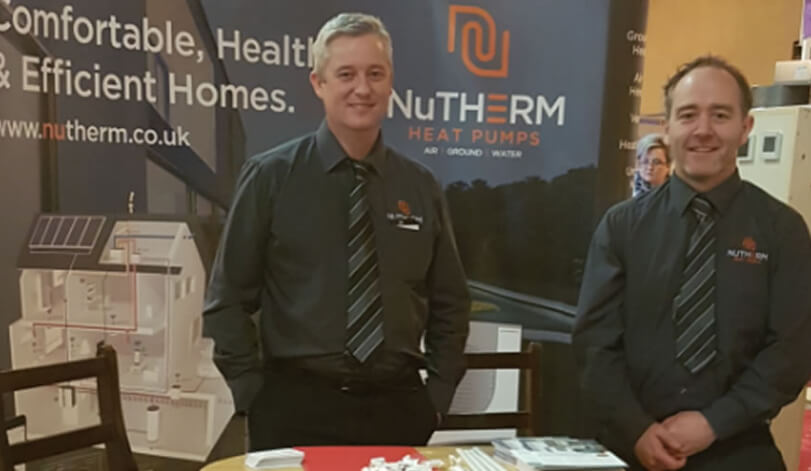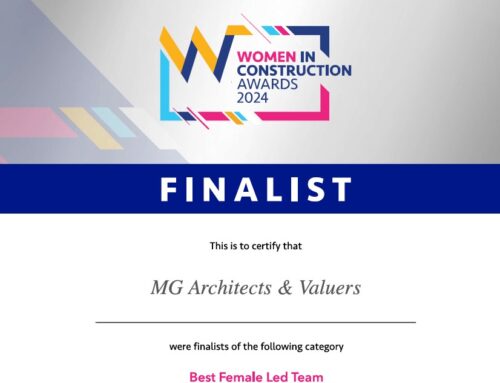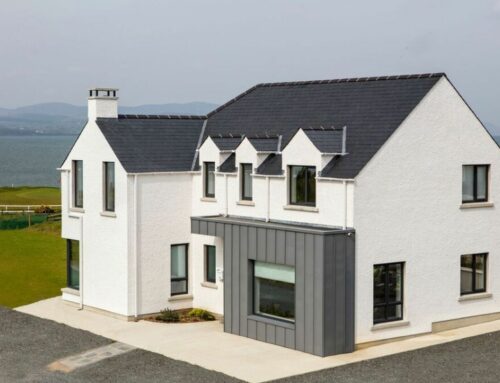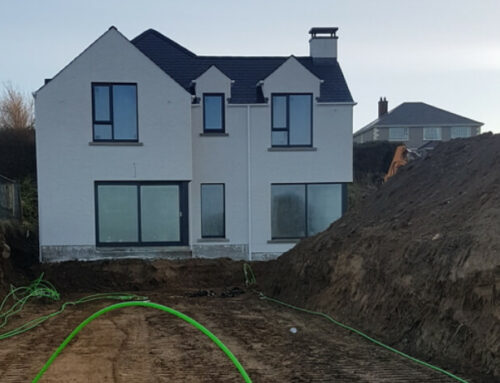Building a new home today has come on leaps and bounds in the past 10 years in terms of renewable energy. Since the introduction of the Building Control Amendment Regulations, BC(A)R, in 2014, new policies have been put in place to ensure that all newly constructed homes are more energy efficient and use renewable energy technologies. This is quite a daunting task, even for an architect, as some of the products are relatively new and how do you choose the right one for you?
We started this process by appointing an SEAI registered Building Energy Rating Assessor (BER), who in our case happened to be my sister Anita, who provides this service through our office at Michael Galbraith Associates. Anita was able to advise us on what we needed to use to achieve the minimum standards for Building Control and what we could invest in to ensure our dwelling achieved above and beyond the minimum standards. We decided on the type of insulation, heating and renewable technologies to use, then we had to appoint a competent renewable contractor.
For our build we chose to appoint NuTherm Renewables Ltd based in Buncrana to guide us through the renewable design process (www.nutherm.ie).Gavin McConnell from NuTherm Renewables Ltd has a Post Graduate Diploma on Renewable Energy Systems and guided us through this process to a very high and professional standard. Within our own practice we are kept in the loop with these renewable systems on a daily basis but to understand the whole package is a very specialised area and requires someone with the required expertise to guide you to the right system for you and your budget.
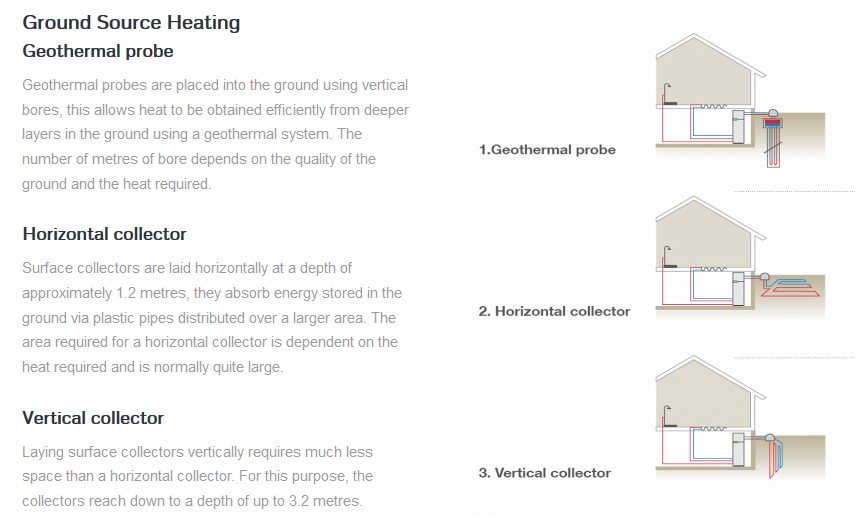
For our heating system we knew we wanted to use a heat pump and we weighed up the options of an ‘air source’ heat pump in comparison to a ‘ground source’ heat pump, with the help of the NuTherm team. Ground source heat pumps are usually more expensive on the onset compared with an air source system but ground source are more efficient and have a longer lifespan of 20-25 years. We opted for a ground source heat pump using horizontal collectors.
This heating system will extract thermal energy from the ground and convert it to a temperature suitable for heating. The system will only require a small amount of electricity to run, therefore no heating bills, just a very minimal increase in electricity. Your heating specialist will be able to show you precedent cost comparison examples of similarly sized households to your own to prove that the systems are very efficient to run.
To insulate our dwelling we choose to fill the 200mm wide cavity with greybead pumped insulation by Doherty’s North West Insualtions, who are based in Donegal and Derry. Dessie Doherty has been in the insulation business a long time and is very competent at what he does.
As our dwelling is a 1 and 3/4 storey design it was very important that our insulation around the exposed roof within the 1st floor rooms were well constructed to contain the heat. Insulated boards between rafters can leave small air gaps as it is impossible for an insulated board to fit a man-made space exactly right, so I felt the best possible solution to fully seal and insulate between the rafters was to use a spray foam insulation. McTaggart Insulation (www.mctaggartinsulation.com) Letterkenny, was our installers of this.
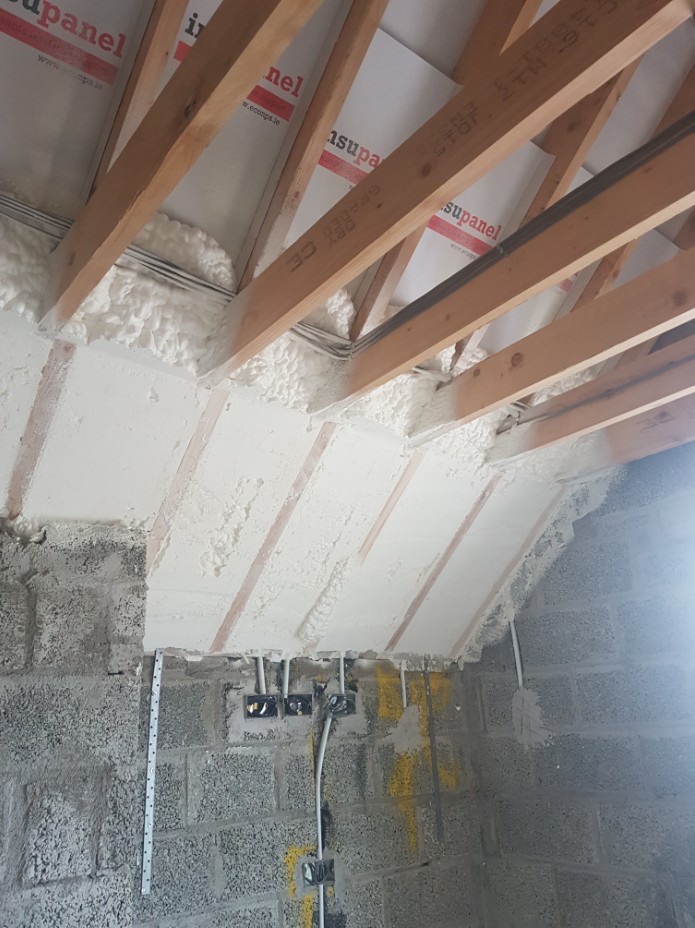
I was always skeptical of spray foam insulation to roofs as I felt the foam pushes against the roof membrane and seals the ventilated air gap required in a roof, however, McTaggart Insulation, use a system to prevent the foam insulation interfering with the air gap (which is a very simple solution) but I had never seen it on the market before I saw McTaggart Insulation stand at the Designer Homes Exhibition in March. We installed 150mm spray foam between the rafters and 92.5mm insulated plasterboard over the rafters.
We then chose to make our house airtight by installing airtight membranes to the building fabric to ensure none of our efficient heat would be lost through gaps around windows, where wall meets roof, etc. This ensures we receive maximum energy efficiency. NuTherm Renewables Ltd were also the installers of this very high tech system, which is a must for anyone looking to achieve a highly efficient and airtight house. Once our walls were chased for the electrics NuTherm Renewables Ltd came on site and sealed the walls behind the chased areas to prevent air leakage through the blocks that would not usually be sealed by plaster as the chasing prevents this. They then tapped all the windows and wrapped the ceiling level with an airtight membrane. Every opening through the membrane is sealed with a specialised tap to ensure no air leakage is possible.
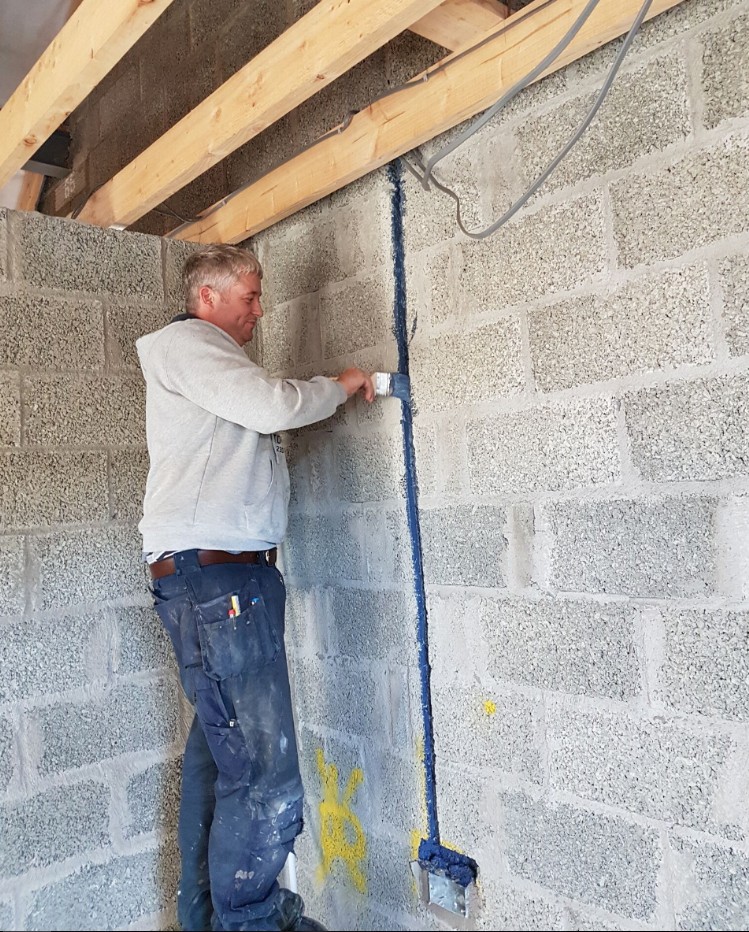
We also chose to install a Mechanical Heat Recovery Ventilation system to ensure clean fresh would circulate through our airtight home. Again this service was provided by our renewable energy consultant Nutherm Renewables. If there is one thing to take from reading this article I think this section is very important. We, as a generation, have become more educated with renewable energy systems and have been taught to make our homes airtight and highly insulated through the use of triple glazed windows, filling our cavities and roofs with insulation, wrapping our houses with airtight membranes and some may forget that all these aspects require an efficient ventilation system to ensure our homes don’t become ‘sick’ with the lack of clean air. Without a proper ventilation system in a new home condensation can start to build up causing dampness, mold and can even make it’s inhabitant’s sick with poor quality oxygen within the air.
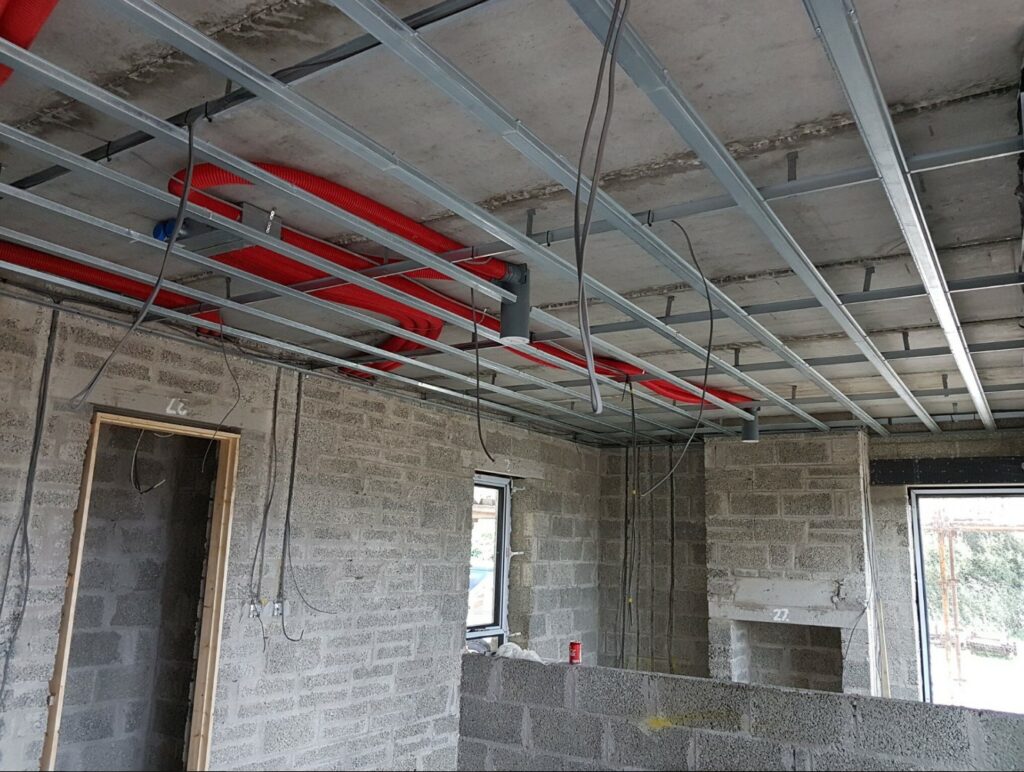 It is very important to appoint a renewable energy specialist early on in the design process so that all aspects can be covered within your architects working drawings and your contractor understands what is required prior to commencing on site. Your Building Energy Rating provider will also have to be kept informed on your decision process as every aspect of change can affect your BER rating.
It is very important to appoint a renewable energy specialist early on in the design process so that all aspects can be covered within your architects working drawings and your contractor understands what is required prior to commencing on site. Your Building Energy Rating provider will also have to be kept informed on your decision process as every aspect of change can affect your BER rating.
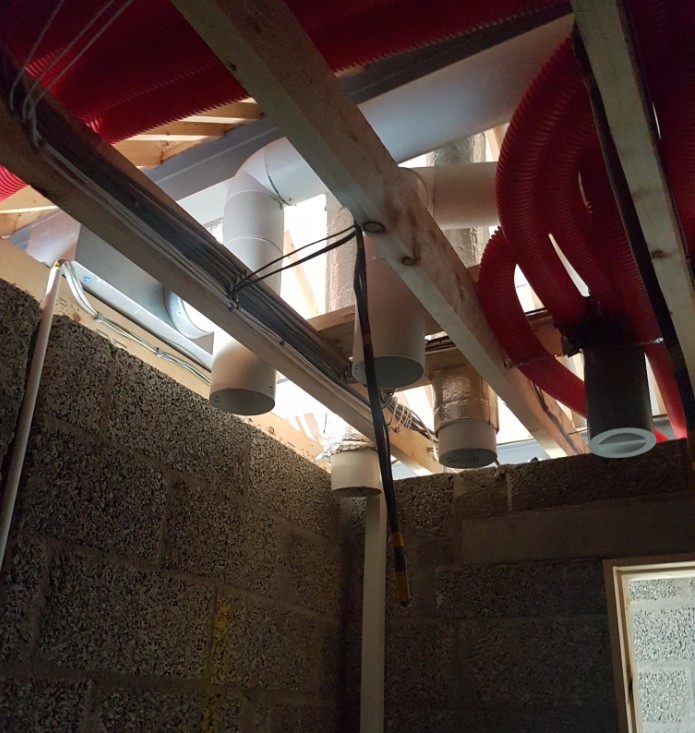
Obviously these high tech renewable systems come at a higher cost than your standard oil boiler but for the home you will spend the rest of your life living in is well worth the money as you will save on running costs through the lifetime of the dwelling, and your also helping to save the planet! #gogreen
